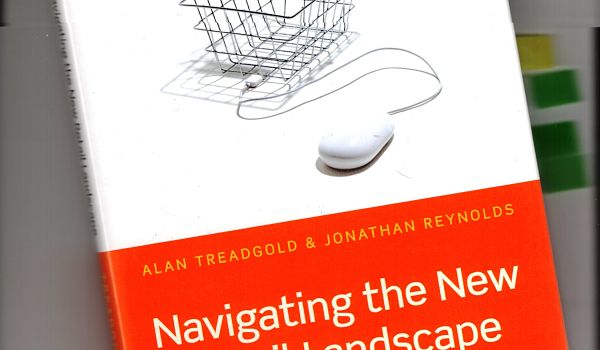
Book Review: Navigating the New Retail Landscape, A Guide for Business Leaders, Dr Alan Treadgold and Professor Jonathan Reynolds
Next year will be C&I’s 30th birthday and, in all of that time, this magazine has never published a book review. But, late last year, a publication was launched onto the Australian scene which will have, or should have, a profound influence on the thinking of Australia’s retail leaders.
‘Navigating the New Retail Landscape’ was authored by Dr Alan Treadgold and Professor Jonathan Reynolds, both with prodigious CVs in the area of retail study, management and consultancy. Alan Treadgold has been a great friend to C&I over the past ten years and has been a popular keynote speaker at two C&I Conventions.
So, is this a book that would appeal to owners and operators of convenience stores? The answer is ‘yes and no’. Although quite short, at a little over 250 pages, this book marks a high point in terms of case studies (23 in all), trend observations, scenario projections and retail insights. It’s not a book you’ll breeze through quickly. This reviewer spent almost as much time thinking about each page as he did reading them. It’s just that kind of book.
For senior management, it is certainly recommended reading. For store owners and operators it is a valuable tool to help to understand how the convenience channel will find its place in the changing face of retailing, and possibly to provide some contextual insight of the changes that will ultimately flow down from head offices all over Australia. To quote the flyleaf:
“The retail industry globally is in the early stages of an era of profound, perhaps unprecedented, change. This book is intended to serve as a robust and practical guide to leaders of enterprises tasked with both understanding and delivering success in the new landscape of retailing.”
The authors cite three drivers of change that are profoundly transforming retail now, and will continue to do so in the years ahead:
The proliferation of cheap smart devices, particularly in emerging economies.
- The arrival of millennials as a major consumer force and the consequent transformation of shopping practices, where the first step in the purchase decision is to go online.
- The ability of the internet to leapfrog conventional bricks and mortar chains and to keep the consumer as well informed as the retailer.
The book provides informative examples of how new businesses are embracing these changes and how existing businesses are developing strategies to cope with them, some with more success than others. The authors are careful to avoid offering what may be seen as a roadmap for retailers, saying that the only certainly ahead for retail is uncertainty.
But the book does set out tools and strategies that every forward looking business leader will need to survive the changing face of retail. It cites numerous examples of how retail leaders are rethinking their management structures, downsizing their bricks and mortar footprints, developing new store formats and spending heavily on IT and heavy engineering. Some are changing ownership structure in order to make long term investments which would be unpalatable to shareholders. They are rethinking delivery strategies and reimagining how the stores of the future will engage customers and add value. The smart ones are also thinking about what core values their businesses represent to the consumer and how those values are perceived in a digital world.
So how are all of the changes affecting the convenience store industry? Apart from the obvious choice of convenience stores as delivery and pick-up points for internet purchases, not a lot at the moment. Internet grocery shopping may well drive customers into the convenience store for increased top-up purchases. Because of the small basket sizes and tendency for immediate consumption at convenience stores, internet shopping is less of a threat to C-Stores.
However, the digital age is unleashing a whole new set of consumer expectations of the values that the retailer stands for and how far it is prepared to go in engaging with the customer. By way of example, early last year 7-Eleven Australia introduced a fuel app that lets customers lock in the lowest fuel price on a given day, driving sales through its own prepaid fuel card: This is a first for Australia. But, if Treadgold and Reynolds are to be believed, we will see a lot more innovation along these lines in the future.
Which makes this book relevant to individual store owners. These retailers will need to understand how seemingly crazy digital innovations that come down from head office must take their place in the modern retail landscape in Australia.
‘Navigating the new Retail Landscape’ is logically laid out, well-written and comes with a comprehensive index and bibliography. It can be purchased online in hard copy or digital format. Just Google the title. After all, that’s how we buy things these days.

